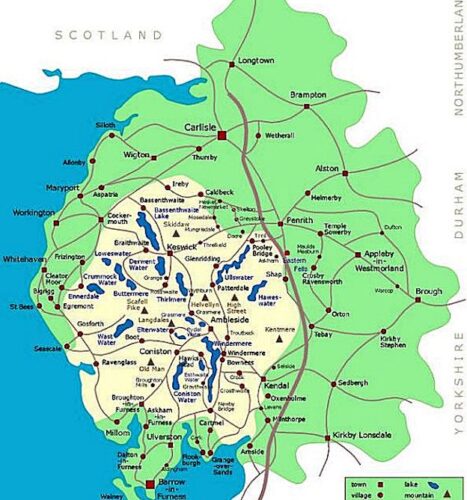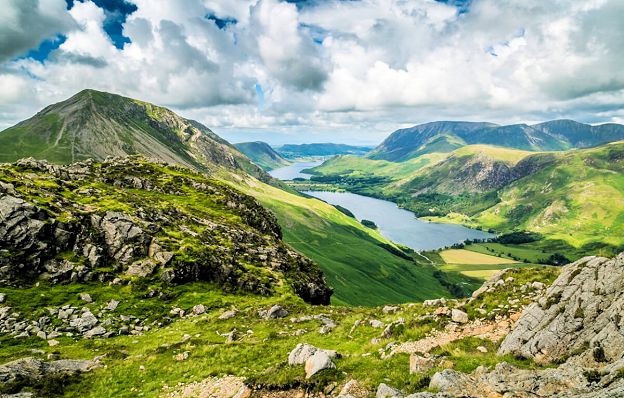
The Lake District, an inspiring place for poets, travelers, tourists and nature lovers.
The loveliest spot that man hath found.
William Wordsworth
I wandered lonely as a cloud
That floats on high o’er vales and hills
When all at once I saw a crowd
A host of golden daffodils
Beside the lake beneath the trees
Fluttering and dancing in the breeze.”
William Wordsworth
The gulfs of Borrodaile! – My soul delights
In these drear deserts. Now methinks a sense
Of something mightier than the common world
Runs trembling through the heart. A spirit born
Of mountain solitudes and sights sublime,
Of earth and sky, and the wild-wandering air,
Is present here.
Bryan Waller Procter
I climbed the dark brow of the mighty Helvellyn, Lakes and mountains beneath me gleamed misty and wide.
Sir Walter Scott
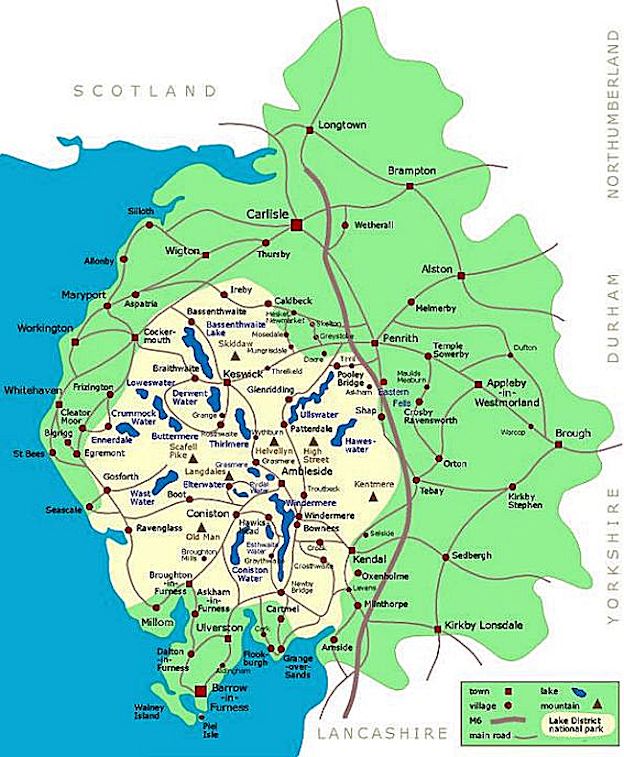
The perfect life: to live in a world of peace in a lake district where the magistrate is good and honest, and to have an understanding wife and bright children.
Zhang Zhao
You may leave the Lake District, but once you’ve been, it’ll never leave you…
Anonymous
Location is everything, I’d rather camp in the Lake District or Scotland than sit in a five-star hotel in Frankfurt.
Rory Bremner
We have the most beautiful planet – the Rockies, the purple fields of the United States, the Lake District, the Pyrenees, the turquoise seas of the tropics.
Dan Aykroyd
For example, in my district there are visitors from all over the world who are drawn to our beautiful beaches, recreational lakes, habitat wildlife preserves and golf courses. Votes: 1
Mark Foley
This illustrious man, the largest and most spacious intellect, the subtlest and the most comprehensive, in my judgement, that has yet existed amongst men.
Thomas De Quincey talking of Samuel Taylor Coleridge
I have seen the tourism market shift over the last ten years with greater value attached to the culture of places, seen people growing sick of plastic phoniness and genuinely wanting to experience places and people that do different things. I see how bored we have grown of ourselves in the modern Western world and how people can fight back and shape their futures using their history as an advantage not an obligation.
James Rebanks

Why does a man climb mountains? Why has he forced his tired and sweating body up here when he might instead have been sitting at his ease in a deckchair at the seaside, looking at girls in bikinis, or fast asleep, or sucking ice-cream, according to his fancy. On the face of it the thing doesn’t make sense. Yet more and more people are turning to the hills; they find something in these wild places that can be found nowhere else. It may be solace for some, satisfaction for others: the joy of exercising muscles that modern ways of living have cramped, perhaps; or a balm for jangled nerves in the solitude and silence of the peaks; or escape from the clamour and tumult of everyday existence.
It may have something to do with man’s subconscious search for beauty, growing keener as so much in the world grows uglier. It may be a need to re-adjust his sights, to get out of his narrow groove and climb above it to see wider horizons and truer perspectives. In a few cases, it may even be a curiousity inspired by A Wainwright’s Pictorial Guides. Or it may be, and for most walkers it will be, quite simply, a deep love of the hills, a love that has grown over the years, whatever motive first took them there: a feeling that these hills are friends, tried and trusted friends, always there when needed.
Alfred Wainwright
Over the years, I’ve lived in a variety of places, including America, but I was born and raised in the Lake District, in Cumbria. Growing up in that rural, sodden, mountainous county has shaped my brain, perhaps even my temperament.
Sarah Hall
It’s funny in the U.K., where I’m not really known because I never did a soap. My English cousins in the Lake District think I’m not a real actor because they’ve never seen me in ‘Home and Away’ or ‘Neighbours.’
Jacki Weaver
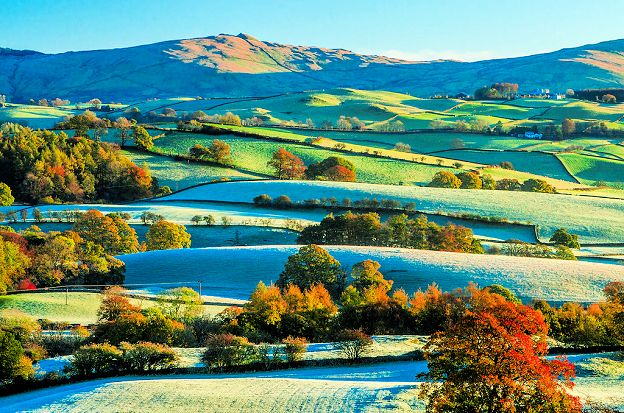
In my years of public service at both the federal and state levels, I have had the privilege of representing most of the communities that make up Congressional District 21, including Hialeah, Westchester, Doral, Kendall, Miami Lakes, Hialeah Gardens, Medley and Palmetto Bay.
Mario Diaz-Balart
My favourite pool is located in a remote valley in the eastern Lake District, surrounded by vine-hung cliffs and slippery boulders. It has a torrential sheet waterfall at one end and is almost black in colour, so it appears bottomless, a portal to nowhere.
Sarah Hall
Our concept of a family holiday was going to a guest house in the Lake district or Wales where walking was part of the holiday.
Roger Bannister
Cumbria is an area that includes most of the scenic Lake District and the Cumbrian Mountains. Lowlands occupy the northern, eastern, and southern fringes of the county. Agriculture, especially sheep raising and dairying, is important. Coal, iron ore, and gypsum are mined. Carlisle is the chief commercial center. Cumbria was formed in 1974 with the merger of the former counties of Cumberland and Westmorland and parts of Lancashire and Yorkshire. Further north in this enchanted county one finds some of the most breathtaking scenery in the British Isles in northwestern England, the Lake District.
This is the home of an area of immense physical variety and beauty. Its hills, mountains, valleys and several lakes , or meres, innumerable mountain tarns and streams, and a series of mountains rising in four points to a height of over 900 m (over 3,000 ft). The district extends about 50 km from north to south and about 40 km from east to west. It became famous when a group of British poets (including William Wordsworth, Samuel Taylor Coleridge, and Robert Southey) made it their home about the beginning of the 19th century; they were described by unsympathetic critics as the Lake School of poetry. In 1906, 304 hectares (750 acres) on Ullswater were set apart as a national park. Lake District National Park now incorporates 2,240 sq km (866 sq mi) of the region. The area is a popular tourist destination.
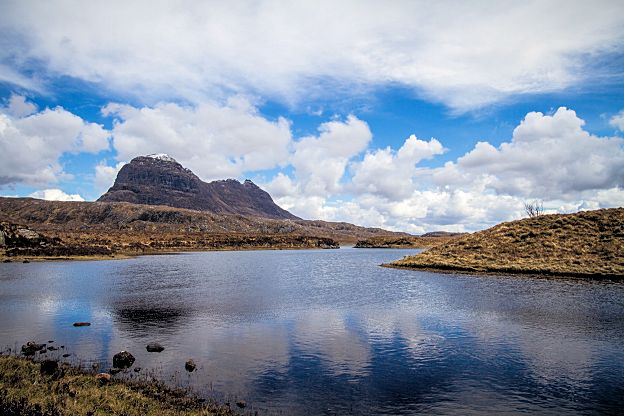
These magical places have proved inspirational in English Literature. The poet William Wordsworth spent most of his life there and Southey, Coleridge and Thomas de Quincey (the author of “Confessions of an English Opium Eater”) were all frequent visitors. The spectacular scenery provided subject matter for Turner’s paintings. Later in the nineteenth century John Ruskin, the writer, historian, architect and lover of Venice, also lived there. The Lake District was turned into a national park in 1951 and it covers an area of some 35 miles square (56 kilometres).
For the more athletic among you there are some splendid walks: the really heroic can attempt Scafell Pike, England’s highest mountain at an impressive 3,210 feet (roughly 1,000 metres!). Otherwise you can see the enchanting lakes (Windermere, Coniston, Ullswater, Derwentwater, to name but four) and the literary-minded can pay homage at the homes of Wordsworth and Ruskin, for example. The best time of the year to stay in the Lake District is probably spring when Wordsworth’s beloved daffodils are out, but the area is also impressive in summer and autumn. Information about itineraries and lodgings are available from the British Tourist Authority in Rome, but one can also refer to the many guide books to England: Benn’s Blue Guide is particularly informative.
The Lake District is intimately associated with English literature of the 18th and 19th centuries. Thomas Gray was the first to bring the region to attention, when he wrote a journal of his Grand Tour in 1769, but it was William Wordsworth whose poems were most famous and influential. Wordsworth’s poem “I Wandered Lonely as a Cloud”, inspired by the sight of daffodils on the shores of Ullswater, remains one of the most famous in the English language.
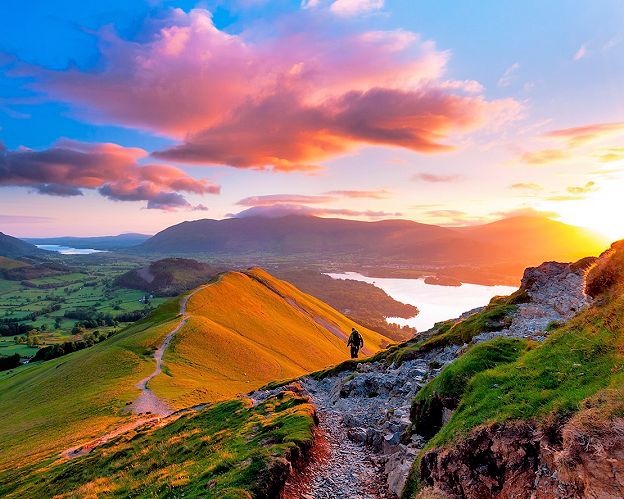
Out of his long life of eighty years, sixty were spent amid its lakes and mountains, first as a schoolboy at Hawkshead, and afterwards living in Grasmere (1799 -1813) and Rydal Mount (1813 – 50). Wordsworth, Coleridge and Southey became known as the Lake Poets. William Wordsworth published his Guide to the Lakes in 1810, and by 1835 it had reached its fifth edition, now called A Guide Through the District of the Lakes in the North of England. This book was particularly influential in popularising the region. Wordsworth’s favourite valley was Dunnerdale or the Duddon Valley nestling in the south west of the Lake District.
The Lake District is an inspiring place for many, whether you’re visiting for just a day or a regular rambler in its fells, the changing landscape and fresh air is a great tonic to help you relax and feel at one with the natural world. William Wordsworth is by far the most famous wordsmith when it comes to the Lake District, his poetry was often inspired by the places that surrounded him. Here, alongside some of Wordsworth’s own, is some of the best quotations that have been inspired by the glorious Lake District.
The Lake District’s location on the northwest coast of England, coupled with its mountainous geography, makes it the wettest part of England. It is home to a great variety of wildlife, due to its range of varied topography, lakes and forests. It provides a home for the red squirrel and colonies of sundew and butterwort, two of the few carnivorous plants native to Britain. The Lake District is a major sanctuary for the red squirrel and has the largest population in England
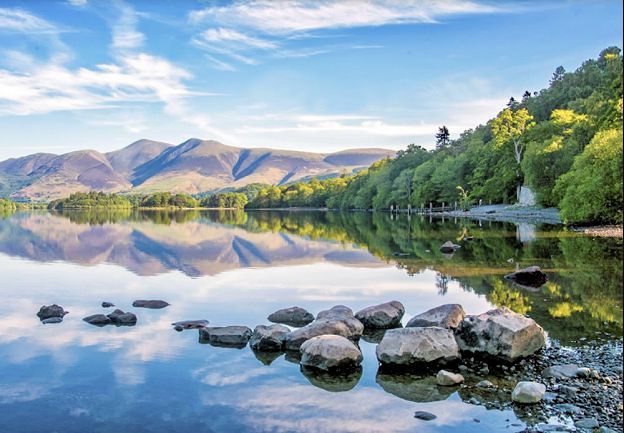
The railways led to another expansion in tourism. The Kendal and Windermere Railway was the first to penetrate the Lake District, reaching Kendal in 1846 and Windermere in 1847. The railways, built with traditional industry in mind, brought with them a huge increase in the number of visitors, thus contributing to the growth of the tourism industry. Railway services were supplemented by steamer boats on the major lakes of Ullswater, Windermere, Coniston Water, and Derwent Water.
The growth in tourist numbers continued into the age of the motor car, when railways began to be closed or run down. The formation of the Lake District National Park in 1951 recognised the need to protect the Lake District environment from excessive commercial or industrial exploitation, preserving that which visitors come to see, without any restriction on the movement of people into and around the district. The M6 Motorway helped bring traffic to the Lake District, passing up its eastern flank. The narrow roads present a challenge for traffic flow and, from the 1960s, certain areas have been very congested.
Since the early 1960s, the National Park Authority has employed rangers to help cope with increasing tourism and development, the first being John Wyatt, who has since written a number of guide books. He was joined two years later by a second, and since then the number of rangers has been rising. The area has also become associated with writer Beatrix Potter. A number of tourists visit to see her family home, with particularly large numbers coming from Japan.
Tourism has now become the park’s major industry, with about 12 million visitors each year, mainly from the UK’s larger settlements, China, Japan, Spain, Germany and the US. Windermere Lake Steamers are Cumbria’s most popular charging tourist attraction with about 1.35 million paying customers each year, and the local economy is dependent upon tourists. The negative impact of tourism has been seen, however. Soil erosion, caused by walking, is now a significant problem, with millions of pounds being spent to protect overused paths. In 2006, two tourist information centers in the National Park were closed.

Cycling is now popular in the Lake District National Park. A number of long-distance cycle routes go through the Lake District, including coast to coast cycle routes such as the C2C, Hadrian’s Cycleway, the Reivers Route and the Walney to Wear route. Several towns have also become hubs for road-cycling holidays and cycle touring, such as Keswick and Ambleside. Mountain bikers use the trails constructed at Whinlatter Forest and Grizedale Forest and also have wilder routes available on bridleways.
Cultural tourism is becoming an increasingly important part of the wider tourist industry. The Lake District’s links with a wealth of artists and writers and its strong history of providing summer theatre performances in the old Blue Box of Century Theatre are strong attractions for visiting tourists. The tradition of theatre is carried on by venues such as Theatre by the Lake in Keswick with its summer season of six plays in repertoire, Christmas and Easter productions, and the many literature, film, mountaineering, jazz and creative arts festivals, such as the Kendal Mountain Festival and the Keswick Mountain Festival.
As far as gastronomy is concerned we must consider that excellent mutton and lamb has been produced locally for generations and traditionally formed the basis of the region’s many rustic dishes, such as Tatie Pot, a potato-topped mutton casserole. The Traditional Cumberland Sausage is a spiced, unlinked pork sausage with Protected Geographical Status. The Lake District now has a growing reputation for its fine dining although standard pub and cafe fare continues to dominate.
There are 5 Michelin Star restaurants within the World Heritage Site boundaries, with a further one less than a mile outside (L’Enclume). Those inside the area are: The Cottage in the Wood, Allium at Askham Hall, Old Stamp House (Ambleside), the Forest Side, and Hrishi, one of the two restaurants at the Gilpin Hotel. Cumbria has many microbreweries, together with Jennings Brewery they supply a variety of ales to pubs and restaurants throughout the region.
Lake District Best Tourist Attractions

